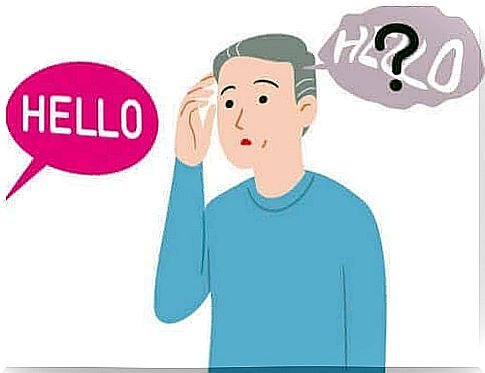Dysarthria: Causes, Symptoms And Treatment

Communication disorders, such as stuttering, can have many different causes. In this article, we’re going to talk about dysarthria, a term you’ve probably never heard of. This term refers to a disease that affects the muscles used to formulate sounds.
Dysarthria has several causes and it presents symptoms that it is important to know how to identify. The sooner this condition is diagnosed, the sooner you can start treatment that can address and help improve this condition.
The causes of dysarthria
In order to explain the causes of dysarthria, we use the article ‘Dysarthria’ as a reference. It explains the different experiences that can cause the occurrence of this condition. We are going to classify them as follows:
- Parkinson’s disease. Slow movements, as well as the vibrations that occur at rest, can cause monotonous articulation of sounds, decreased voice volume and lack of word accentuation.
- brain damage. Trauma to the head can cause brain damage which in turn also causes dysarthria with a nasal voice, often interrupted articulation of words or disturbances in word accentuation.
- Other diseases. Degenerative diseases and brain tumors can cause distortions when pronouncing consonants, slow speech when talking to others, and difficulty speaking.

These are just some of the causes of dysarthria. There are in fact many more. Stroke, cerebral palsy or Huntington’s disease can also cause some of the symptoms mentioned. We will discuss this in detail below.
The most characteristic symptoms of dysarthria
In the section above, we have mentioned some of the symptoms of this condition. We’ll go into more detail now. Many of the symptoms are included in the article ‘ Speech, language and swallowing in Huntington ‘s disease ‘ (Spanish link).
- Whispering talking. A person suffering from this condition cannot raise his voice or speak in a normal tone.
- Nasal voice. Without being constipated or having any other problem that prevents the passage of air through the nose, the person with this condition tends to speak in a clear nasal voice.
- gibberish. The sounds of the words are changed or even suppressed.
- Uneven or abnormal speech rhythm. A person suffering from dysarthria can talk very quickly, making it very difficult to understand what he or she is saying. However, this can be alternated with very slow speech.
- Monotonous speech. Whether asking questions or showing surprise, the voice always has the same tone.
If a person suffers from these symptoms, he should go to a doctor who, after performing the tests he deems appropriate, will determine whether the person in question has dysarthria. Once this condition is diagnosed, there are several ways to treat it.
Therapy

The treatments of dysarthria depend on the causes and on what the doctor deems best for the satisfactory evolution of the patient. Speech therapists, however, play an important role here.
They work with different exercises to improve speech (think breathing, voice formation, intonation, relaxation, etc.), reduce gibberish, correct the rhythm as much as possible and reduce monotonous speech when communicating.
In addition, psychologists often intervene, as patients with dysarthria can become isolated and depressed because of the symptoms they suffer from. If the condition is severe, surgery may be required.
We hope this article has helped you discover this uncommon communication disorder. If you have any of the symptoms we mentioned above, don’t hesitate to see your doctor.









